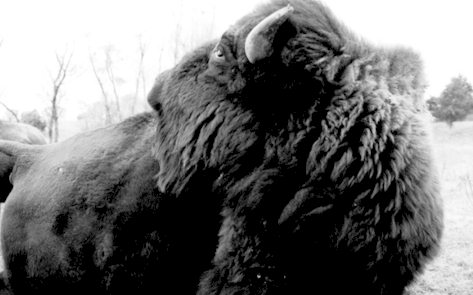RECREATIONAL AND AESTHETIC CONSIDERATIONS

The National Park System was created to “conserve the scenery and the natural
and historic same in such manner and by such means as will leave
them unpaired for the enjoyment objects and the wildlife therein
and to provide for the enjoyment of the of future generations”
(NPS Organic Act. In Lowry 1998). Bison are an icon of
this endeavor.
The survival of the infected bison in Yellowstone National Park, and the conflict
that it raises, exemplifies a fundamental opposition of values
and behavior. On one hand, we have the survival of the bison as
a fundamental keystone species of the ecosystem and the image
of the natural North America that is sells to tourists. This is
a priority for some actors despite the infection and the potential
brucellosis transmission to cattle. On the other hand, we have
the livestock industry and its dependent population that perceives
the presence of the bison as a threat, and for whom their own
survival, and the survival of their rancher way of life take precedence
over the bison welfare.
Also, other actors
have an opposition of ideological values and economic interests
associated with brucellosis. Each of these perceptions of the
landscape and its uses has one or more groups of economic beneficiaries.
This opposition materializes the modern conflict between economy
of extraction and production (primary and secondary sectors),
and an economy based on the offer of services, tourism and related
activities (tertiary sector).